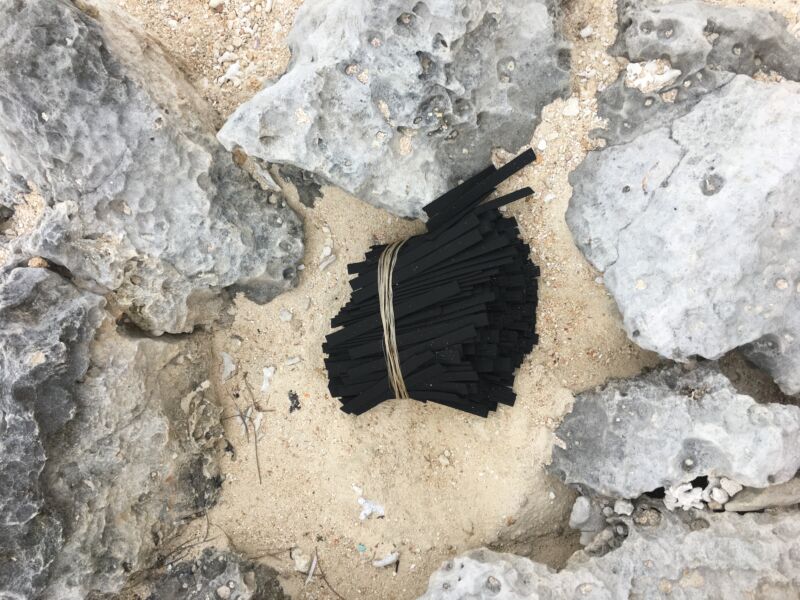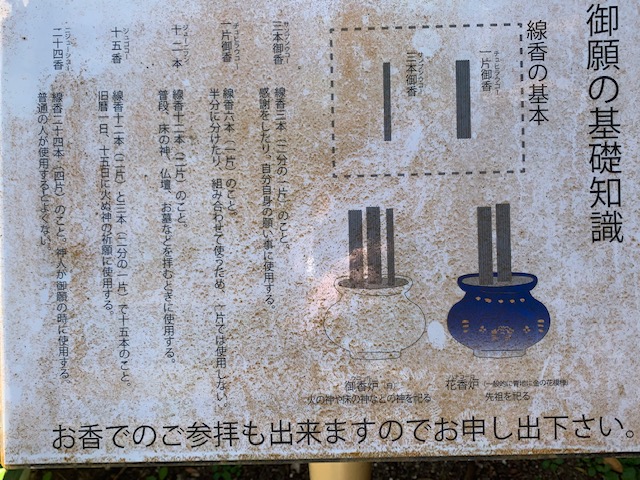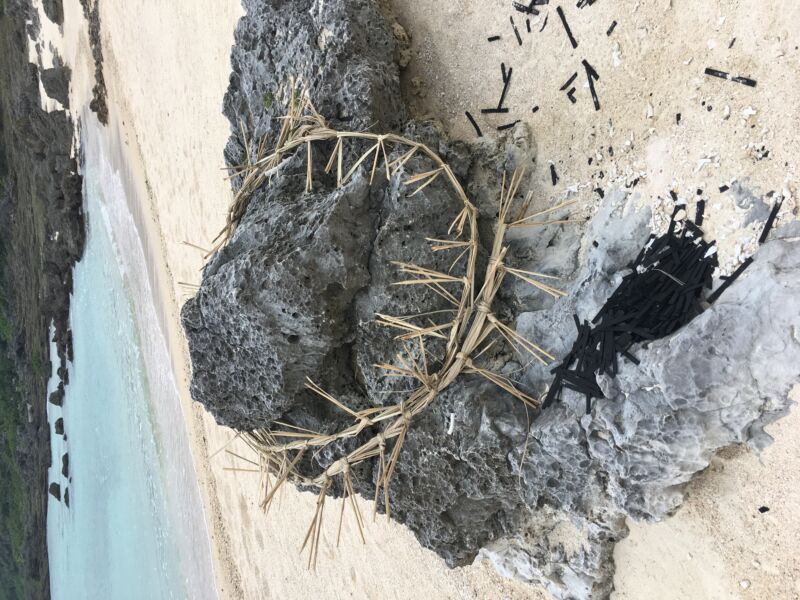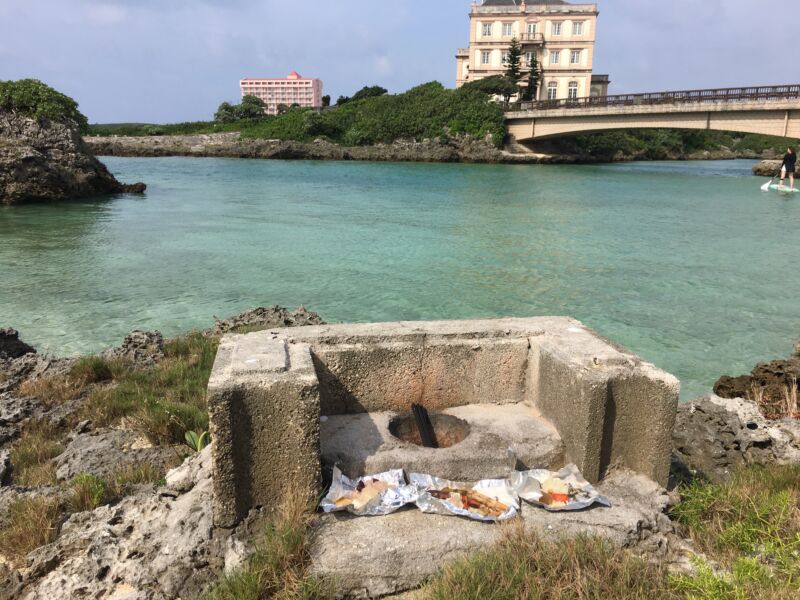
One aspect of Ryukyu religious activity that is particularly striking is the use of incense, not just individual sticks but in bundles. At religious sites you often see wads of incense left behind. This is very different from the rest of Japan, and a board at Ryukyu Mura (Ryukyu Village) helpfully explained the significance of the numbers involved. I am no expert in Daoist numerology, but I suspect it underlies the practice.

Three is a special number in shamanism, as generally in world cultures, and three sticks are used in Ryukyu religion for gratitude or when making personal wishes. (Bundles of six sticks are divided into two lots of three.)
A bundle of twelve sticks is divided into two lots of six for kami worship, at graves or for the house altar. Since six and twelve are multiples of three, this is obviously a step up in terms of spiritual power.
A bundle of 15 sticks divides into two lots of six and one lot of three. This is used every month on the 1st and 15th by the old lunar calendar for worship of the important deity, Hi no kami.
A bundle of 24 is the most powerful and supposed to be only used by a priestess. Interestingly it is made up of 8 x 3, and eight in Chinese writing (and Japanese mythology) signifies infinity. However, in Ryukyu religion apparently the bundle is seen as comprising six groups of four.
*********************
Thanks to Green Shinto subscriber, Jann Williams for pointing me to ‘The Cult of Kabira’, an academic paper by Allan H Smith in 1960. Kabira is part of Ishigaki Island, and with regard to the numerical system Smith writes as follows: “The Kabira numerical system, like that of the Japanese, is a decimal one from the linguistic point of view. The numbers 3 and 5 frequently appear, however, as basic units, as in counting rice bundles. Numbers are believed to possess either an auspicious or an unlucky association; as a case in point, the digits 3, 5, and 7 generally possess a favorable connotation in religious context.”


For Part 1 of Ryukyu Religion, click here. For other pieces on Okinawan religion, see here for the Dragon King and the first of five articles on Okinawa. Or click here for a piece on Miyakojima. Or here on Amami Oshima.

Leave a Reply